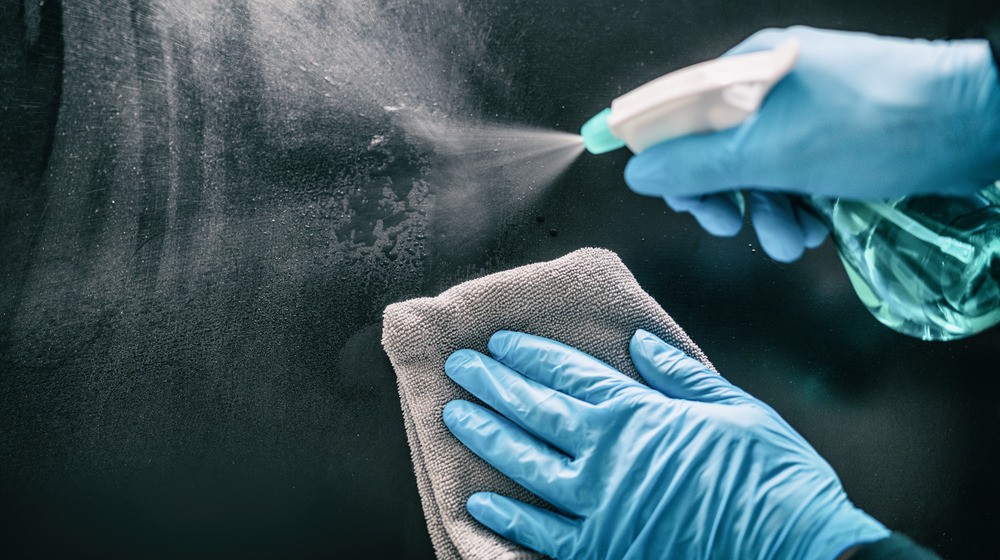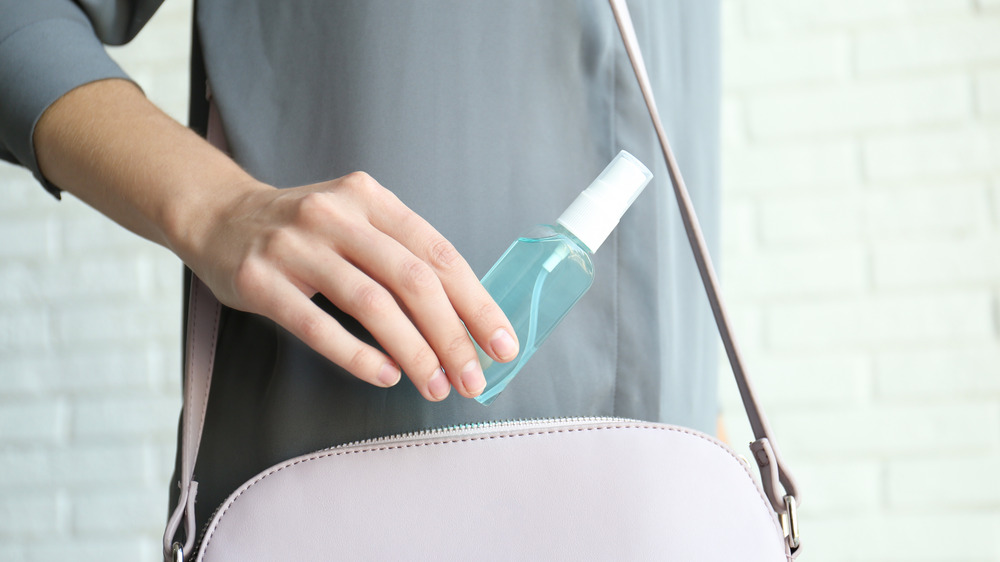There's A Major Difference Between Sanitizing And Disinfecting
If you're like many people, you might be paying more attention to cleaning surfaces at home and work amid the pandemic. Interestingly, when discussing things, the words cleaning, sanitizing, and disinfecting often get used interchangeably (via Real Simple). However, there's a significant difference between sanitizing and disinfecting, and knowing that difference could affect the way you choose to clean things. Per Health, while sanitizing lowers the number of germs on surfaces to a safe level, disinfecting kills germs on surfaces.
According to the CDC, you should use soap and water to clean dirty surfaces before applying a disinfectant. Cleaning doesn't usually kill germs, but it removes them, which lowers their numbers (via Real Simple). In contrast, disinfecting something means using an EPA-registered disinfectant to kill germs, especially viruses.
Sanitizing is similar to disinfecting, but it kills fewer germs and works better on bacteria. Steve Hengsperger, cleaning expert and CEO of Tersano, told Real Simple, "On bacteria, sanitizing requires a 99.999% reduction, whereas disinfecting requires a bigger (99.9999% [or six nines]) reduction. As soon as you start making claims on killing viruses, then you are talking about disinfecting."
To put it more simply, "Disinfecting kills the majority of viruses and bacteria," as Diane Calello, MD, told Health, adding, "Sanitizing doesn't kill everything." Interestingly, some products like bleach can be both disinfectants and sanitizers, depending on if it's diluted or not. You can use diluted bleach to sanitize and undiluted or only slightly diluted bleach to disinfect (via the CDC).
Here's what you need to know about when to sanitize or disinfect
In general, at home, you might more frequently use disinfectants for higher-touch areas of your house (via Health). One caveat is that you shouldn't disinfect countertops where you prepare food to avoid leaving any dangerous chemicals behind.
You might also have hand sanitizer, which should contain about 60 percent alcohol (via Health), that you keep in your purse or somewhere else convenient for when you don't have access to soap and water for your hands, per the CDC. One clear difference between sanitizing and disinfecting is that you should never disinfect your skin because doing so could cause rashes and other issues. Good bacteria live on your skin, and killing them all isn't healthy. While it's better to use soap and water to wash your hands for at least 20 seconds (via the CDC), hand sanitizer is a critical way to keep yourself healthy when you're away from a sink.
It can be tempting to try to disinfect everything, but it's essential to know when sanitizing is the better option, especially when it comes to either food or your skin.

